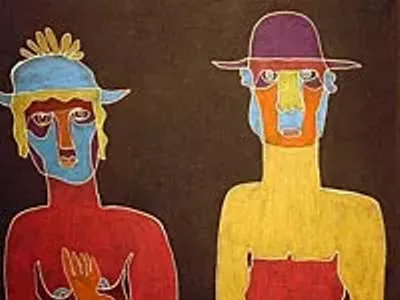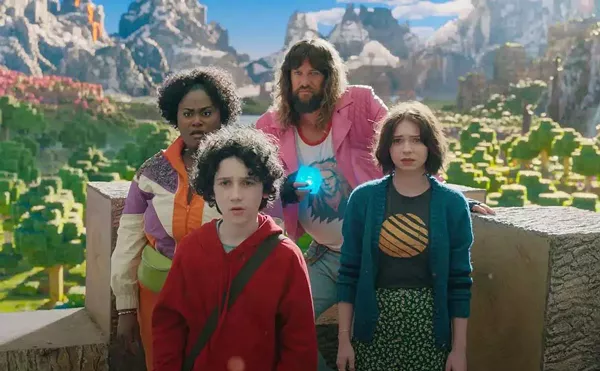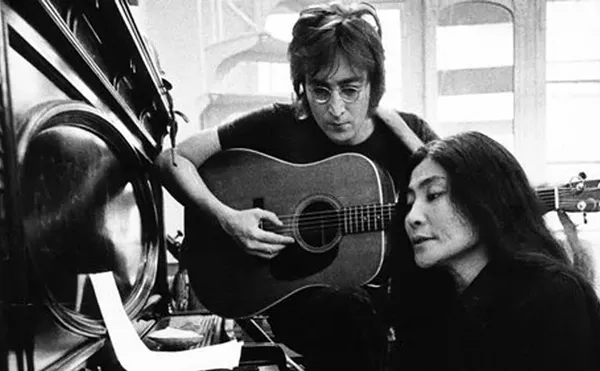Films come along every once in a while that are so perfectly executed, so pure and honest in their storytelling, so artful and poetic in their framing that any description of their contents will fail to convey even the slightest remnant of their impact. One is acutely aware of this phenomenon when attempting to capture and verbalize the power of a painting or the glorious strains of an orchestra, or a short story or novel that changes you in a deep and mysterious way. Any description will tarnish the work, reduce it to its parts. So when I tell you some things about The Triplets of Belleville, be aware that the sum of its “parts” can only be measured by how enraptured and awestruck you will be upon viewing it. Adjectives will miss their mark, superlatives will not suffice, and the only way to convey this film’s utter perfection will be to invent some kind of strange hand sign or to dance a jig under a night full of stars. It is that good.
The Triplets of Belleville is an animated feature from French director Sylvain Chomet. Although the film is practically dripping with all-things-French — the music and architecture and clothing, and even the Tour de France makes an appearance — there is no need for subtitles. There is a question posed in English that bookends the film, but other than that it plays out like the great silent films of old.
Except that it’s not “silent” at all. Sound is everywhere in Triplets, sound of such incredible detail and humor it is practically a supporting player in the story. From a dog’s toenails scratching along an apartment’s squeaky floor to hand grenades exploding in frog-filled marshes to the cacophony of the big city, it is the sound that brings out the rich textures and the stunning depth of the visuals.
It may seem inaccurate to describe any animated film with the term “realistic,” but because so much creative work has gone into the way this film “sounds,” it is the only word that suffices. It’s a flipped-out, rubbery realism that pulls you right into the screen.
The film tells the story of a grandmother and her grandson and their big fat dog and a trio of frog-chomping chanteuses. The film opens with the three gals laying down their signature number, accompanied by Fred Astaire and Josephine Baker kicking up their animated heels. It’s all in black and white and done in a 1930s cartoon style. The number ends, and so does that style of animation because we were watching it on television along with grandma and her pudgy grandson. A style within a style, a dream within a dream, and the movie isn’t even five minutes old. The film begins with this type of luscious eye-candy and never lets up.
The world in which grandma and grandson live is one of a thousand deco lines and yellowing old-world dinginess. Along with the aforementioned whale of a dog, she trains her grandson to be a bicycle racer. He is transformed from a bored and lonely kid to a grotesquely carved adult, training for the Tour de France. When grandson steps off his bike after a severe and rigorous grandma-helmed workout, it is a wonder he can walk at all. His gargantuan calf muscles are one of the film’s greatest sight gags, as is his inability to walk with any type of normal gait. The bicycle he rides upon has transformed his body. Grandma gave him a mission, and he is the very picture of determination and drive.
We’re treated next to Mr. Chomet’s take on the world’s most famous bicycle race. Grandma trails grandson in a comfort van, keeping tabs on her beloved creation. The bicyclists straining and grunting and moving oh-so-slowly up the French mountains are rendered so well it feels as though you’re watching this in some newly invented film medium. It can be clumsily described as 3-D, layer upon layer of painstaking detail in every shot. Another perspective whisks you above the impenetrable rock, which crawls with the flesh and metal and rubber of the racers. You feel the burn of their muscles as they struggle against the slope.
There are nefarious forces at play, waiting to propel Triplets into another world altogether. What follows the race is all mayhem and adrenaline, adventure and surreal slapstick, but that brief description hardly touches the heart and brains and melancholy of the film.
There are films you can count on one hand that express all that The Triplets of Belleville puts before us. Films that create worlds we visit over and over again, like the cold empty spaces of Kubrick’s 2001 or the steaming bloody jungles of Coppola’s Apocalypse Now. Sylvain Chomet’s first feature length film belongs in their exalted company.
It’s that good.
Showing at the Detroit Film Theatre (inside the DIA, 5200 Woodward Ave., Detroit), Friday-Sunday, Feb. 6-8. Call 313-833-3237. Opens Friday, Feb. 13, at Main Art Theatre (118 N. Main, Royal Oak). Call 248-263-2111.
Dan DeMaggio writes about film for Metro Times. E-mail letters@metrotimes.com.






